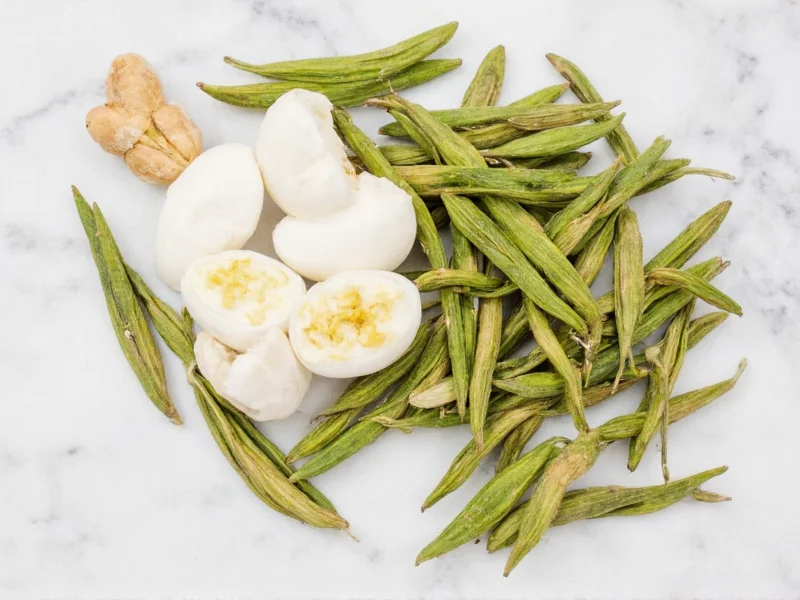Understanding Cardamom Varieties and Their Distinct Applications
Cardamom exists in two primary varieties, each with unique flavor profiles and regional applications. Green cardamom (Elettaria cardamomum), often called true cardamom, features a delicate, citrusy aroma perfect for sweet applications. Black cardamom (Amomum subulatum) delivers a smoky, camphorous flavor better suited for savory dishes. Understanding these differences is essential when exploring how to use cardamom in baking versus savory preparations.
Chefs and home cooks should know that green cardamom pods contain small black seeds that release maximum flavor when lightly crushed. The whole pods work well in rice dishes like biryani, while ground cardamom shines in baked goods. Black cardamom's intense flavor means it's typically used whole in slow-cooked dishes and removed before serving.
Culinary Applications Across Global Cuisines
Cardamom's versatility spans continents and cooking traditions. In Scandinavian countries, it's indispensable in lussekatter (saffron buns) and knäck (pepparkakor cookies). Indian cuisine features cardamom prominently in garam masala, chai tea, and rice dishes. Middle Eastern cultures incorporate it into coffee (qahwa) and rice preparations like machboos.
| Cuisine | Traditional Cardamom Use | Recommended Form |
|---|---|---|
| Scandinavian | Danish pastries, gingerbread | Ground |
| Indian | Curries, rice dishes, chai | Whole pods or seeds |
| Middle Eastern | Coffee, rice pilafs | Crushed pods |
| East African | Stews, meat marinades | Ground blend |
Practical Preparation Techniques for Maximum Flavor
Proper preparation significantly impacts cardamom's flavor contribution. For optimal results when making cardamom in coffee recipe preparations, lightly crush whole pods to release essential oils without making the beverage bitter. In baking applications, grinding seeds immediately before use preserves volatile compounds that degrade quickly in pre-ground spice.
When incorporating cardamom into liquid-based recipes like tea or syrup, add it early in the cooking process to allow flavors to infuse properly. For dry applications like spice rubs, combine ground cardamom with complementary spices like cinnamon and cloves. Remember that cardamom substitute options like allspice or a cinnamon-clove blend work in emergencies but lack cardamom's distinctive complexity.
Traditional Medicinal Applications and Modern Research
Traditional medicine systems have utilized cardamom for centuries, particularly for cardamom benefits for digestion. Ayurvedic practitioners recommend chewing cardamom seeds after meals to reduce bloating and improve digestion. Modern research suggests cardamom contains compounds with antioxidant and anti-inflammatory properties, though more clinical studies are needed to confirm specific health claims.
For those exploring cardamom tea preparation, steeping 3-4 crushed pods in hot water for 5-7 minutes creates a soothing beverage. Some traditional preparations combine cardamom with ginger and mint for enhanced digestive benefits. Always consult healthcare providers before using cardamom for medicinal purposes, especially if taking medications or managing health conditions.
Storage Methods to Preserve Freshness and Potency
Proper storage dramatically affects cardamom's shelf life and flavor intensity. Whole pods maintain freshness significantly longer than ground spice—up to one year when stored correctly versus six months for ground form. The optimal cardamom storage methods involve keeping pods in airtight containers away from light, heat, and moisture.
Freezing whole cardamom pods preserves flavor for extended periods. When ready to use, allow frozen pods to reach room temperature before opening the container to prevent condensation. For best results in recipes requiring ground cardamom, purchase whole pods and grind them as needed using a dedicated spice grinder or mortar and pestle.
Cultural Significance Beyond Culinary Applications
Cardamom holds cultural importance beyond its flavor contributions. In many Middle Eastern cultures, serving cardamom-infused coffee represents hospitality and respect. Traditional Indian weddings often include cardamom in ceremonial foods symbolizing prosperity. Understanding these cultural contexts enhances appreciation for green cardamom vs black cardamom uses across different traditions.
Frequently Asked Questions
What's the best way to use cardamom in baking?
For baking applications, freshly ground cardamom seeds provide the most vibrant flavor. Use 1/4 to 1/2 teaspoon of ground cardamom per cup of flour in sweet breads and cookies. When making Scandinavian pastries, combine cardamom with equal parts cinnamon for authentic flavor. Always add ground cardamom late in the mixing process to preserve volatile aromatic compounds.
Can I substitute cardamom in recipes if I don't have it available?
While no perfect substitute exists for cardamom's unique flavor, you can create a reasonable approximation by combining equal parts cinnamon, cloves, and a pinch of nutmeg or allspice. For savory dishes, a small amount of cumin with coriander works better. Remember that cardamom's citrus notes are difficult to replicate, so adjust quantities based on the recipe's requirements and your taste preferences.
How much cardamom should I use in coffee?
For a standard 8-ounce cup of coffee, use 1-2 whole cardamom pods (lightly crushed) or 1/8 teaspoon of ground cardamom. In traditional Middle Eastern preparation, cardamom is often added directly to the coffee grounds before brewing. For stronger flavor, increase to 3 pods per serving, but be cautious as excessive cardamom can make coffee bitter. Always crush pods just before brewing to maximize flavor release.
Is cardamom safe for daily consumption?
Cardamom is generally safe for culinary use in typical food amounts. Most adults can safely consume up to 3 grams (about 1 teaspoon) of ground cardamom daily. However, excessive consumption (more than 5 grams daily) may cause digestive discomfort in some individuals. Those with gallstones should consult a healthcare provider before regular consumption, as cardamom may increase gallbladder contractions. Pregnant women should stick to culinary amounts rather than medicinal doses.
How can I tell if my cardamom has gone bad?
Fresh cardamom should have a strong, citrusy aroma and vibrant green color (for green cardamom). Signs of deterioration include faded color, musty smell, or lack of fragrance when pods are crushed. Whole pods that feel light when shaken likely have dried out seeds. Properly stored cardamom maintains quality for 6-12 months. To test freshness, crush a pod and smell it—if the aroma is weak or musty, it's time to replace your supply.











 浙公网安备
33010002000092号
浙公网安备
33010002000092号 浙B2-20120091-4
浙B2-20120091-4